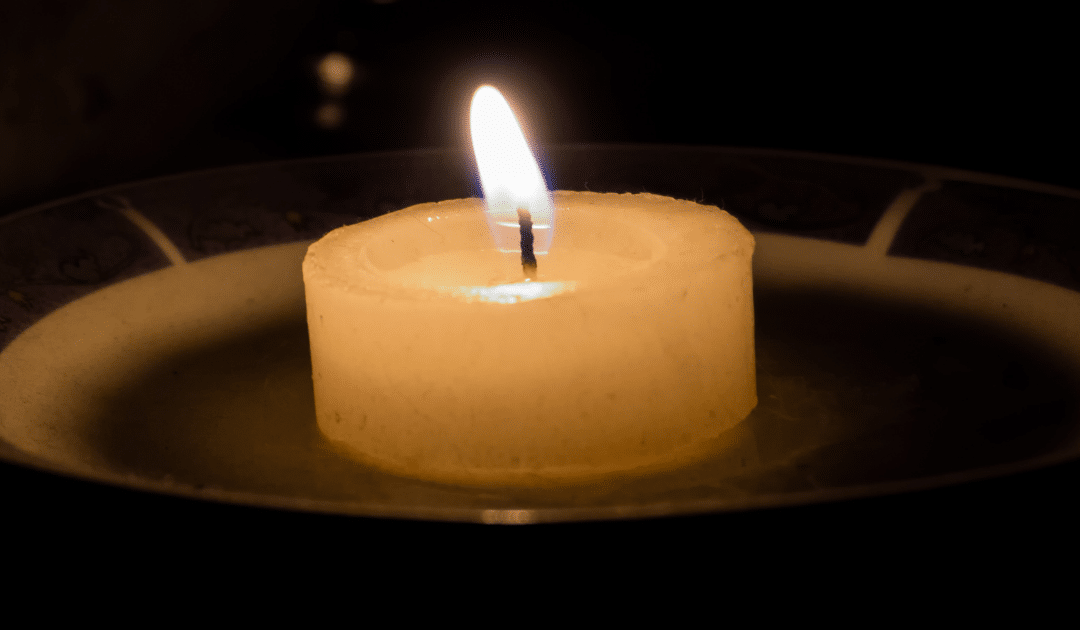
by California Casualty | Safety |
Power outages can last anywhere from a few hours to days or even weeks. In the latter case, an outage can affect entire communities, disrupting communications, transportation, and emergency response or health care services. It can also close businesses, banks, gas stations, grocery stores, and other services.
Understanding why and how they happen can help you better prepare. Next, having a plan and taking precautions ahead of time will help you and your family ride out the outage with less stress and a greater sense of control.
When and Why They Happen
Knowing how outages happen can sometimes help you predict when they’re most likely to occur – for instance, during storms or heatwaves. Other times, they’re random and unpredictable.
-
- Weather – Storms and weather events such as high winds, ice, and snow are the most common cause of outages, oftentimes due to trees and limbs taking down power lines. Rain and flooding can also damage above-ground or underground electrical equipment. And earthquakes of all sizes can damage electrical grids.
- Animals – Far and away, squirrels cause the most damage to power lines, but snakes and other critters can prompt an outage by nesting in or climbing on transformers, boxes and other equipment.
- Human Error – Car accidents and digging mishaps — when underground lines are hit — are a common cause. Additionally, electrical overuse during heatwaves and other times of unusually high demand can overburden cables, transformers and other links in the system.
Get Ahead of an Outage with Smart Planning
Planning and preparation are key to making a power outage manageable. There’s no better time than today to get started on the steps below.
Communications
-
- Download the NOAA radio app, your local weather alert app, and any other emergency app of your choice.
- Talk to your medical provider If anyone in your household requires electric medical devices or refrigerated medication. Get guidance on what to do if you lose power.
- Update your phone number and contact information with your electric provider.
Plans and kits
-
- Assemble or update your emergency kit – one for your family and another for your pet(s). Be sure to check and replace all batteries and have fresh back-ups. Also make sure you have COVID-19 supplies such as hand sanitizer, wipes, masks, and gloves.
- Make sure your household evacuation plan is current, and all household members and pets are accounted for.
- Know your local community’s risk and response plans.
- Have a plan, budget, and some extra cash on hand in case power restoration is delayed.
In Your Home
-
- Install surge protectors to help safeguard expensive appliances, computers and entertainment systems.
- Install carbon monoxide monitors with battery backup on every level of your home.
- Have at least a half tank of gas in your car at all times.
- Purchase household and food supplies ahead of time and stash some extras in case of an extended outage.
A Go-To Plan for When the Grid Goes Dark
Ideally, you and your family will have been able to take the above steps before the lights go out. If so, you’ll be ready to put the following strategies into place in order to remain as safe and comfortable as possible during the outage.
Communications
-
- Tune into the NOAA radio on a battery-powered or hand-crank radio, and/or the local radio station for news and weather updates.
- Report the outage immediately to your local power provider (have their info printed out and handy).
In Your Home
-
- Turn off and unplug all appliances, including the air conditioner, water heater, furnace, and water pump, as well as any sensitive electronics. Leave one light on to know when the power’s been restored – this helps prevent a circuit overload when everything comes back online.
- Keep refrigerator and freezer doors closed. Frozen food will stay frozen for 24-48 hours, depending on how full the freezer is. For refrigerated items, after about 4 hours, move perishable items into a cooler with ice (they should remain at 40 degrees Fahrenheit or colder to be safe).
- If using portable stoves or lanterns, only use them in sufficiently ventilated areas.
- Use flashlights instead of candles.
Outside
-
- Report any downed power lines to your electric company. Keep yourself, family, and pets away from downed lines, flooded areas, and debris.
- Avoid driving if you can. Traffic lights will be out and roads will be chaotic and unsafe.
- If you’re operating a generator, follow safety protocols. Never operate it in your home, garage, or other enclosed spaces.
- Check on your neighbors. The elderly and young children are especially susceptible to extreme temperatures.
The length of time it takes to restore power can vary according to the cause of the outage, the extent of damage, and the geographic area affected. Electric companies have detailed plans and procedures for restoration — starting with repairs to damaged power infrastructure, then re-powering critical community services, and finally restoring power to individuals and businesses in order of density.
By following the tips above, you can ride out the worst of it with less stress, knowing you prepared well.
This article is furnished by California Casualty, providing auto and home insurance to educators, law enforcement officers, firefighters, and nurses. Get a quote at 1.866.704.8614 or www.calcas.com.
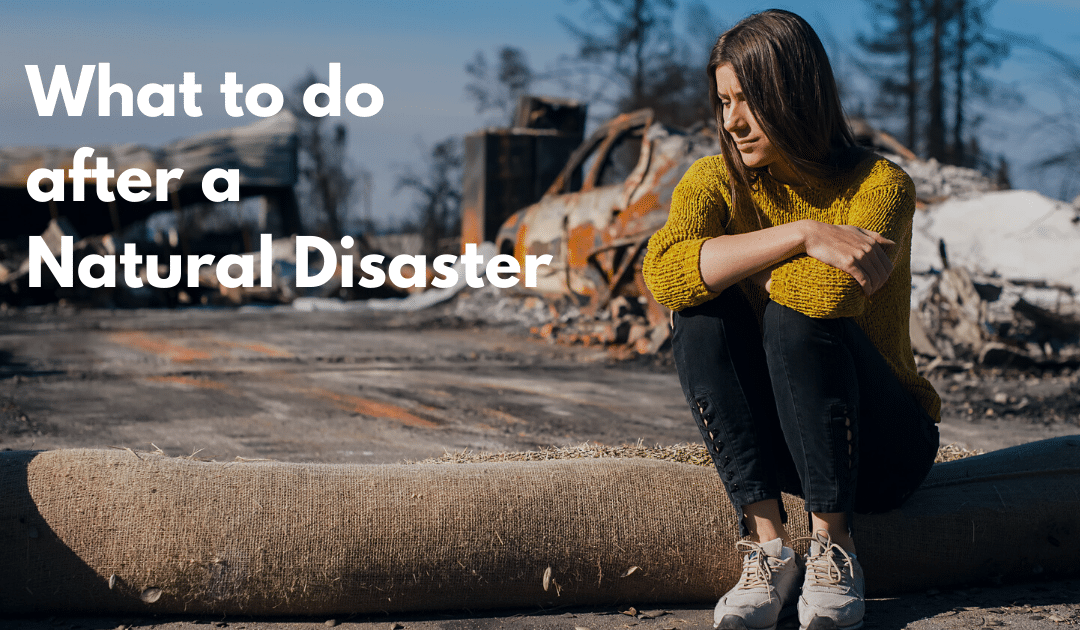
by California Casualty | Good to Know |
Whether it’s a flood, tornado, hurricane or earthquake, a natural disaster can turn your world upside down in a matter of seconds. Besides stress, adrenaline, and fear, there may be injuries to deal with and damage or loss of property. Many people don’t know what to do in the wake of a disaster, which can hinder their coping efforts and recovery.
Here’s a list of the 6 main steps to take immediately following a natural disaster and in the days, weeks, and months that follow.
- Deal with the Immediate Aftermath
-
-
- Make sure all household members are accounted for. If anyone is missing, seek help from first responders.
- Attend to physical injuries or emotional distress. In cases of serious injury, summon professional help.
- If you and your family need to evacuate, follow your family’s evacuation plan, grabbing emergency kits, go bags, and essentials as assigned.
- Notify family and friends that you’re safe. If you can’t connect directly, you can register with FEMA’s emergency family locator online or by calling 1-800-588-9822. See more FCC & FEMA communication tips here.
- Be aware of any new safety issues created by the disaster, such as damaged roads/bridges, chemical spills, downed power lines, and washed-out roads. Inform local authorities if possible.
- Find Temporary Shelter or Housing
-
-
- If your home is damaged and rendered uninhabitable, take photos of the damage, remove any valuables you can, and secure the property. Call your insurance company as soon as you’re able.
- If you need to find an open emergency shelter near you right away, you can text SHELTER and your 5-digit zip code to 4FEMA. You can also use the FEMA Mobile App.
- gov also has shelter resources online.
- If you need to secure a hotel or other short-term housing, check FEMA’s resources for interim housing.
- Remember that COVID-19 safety and health precautions may still be in effect so be sure to protect yourself and your family and stay informed on general guidelines.
- If you have a pet, be sure to ask all sheltering or housing inquiries if pets are allowed.
- Keep all your receipts from temporary housing costs, as you can most likely submit them for reimbursement.
- Emergency Food and Water
-
-
- Listen to local radio or television to find disaster feeding sites.
- Check with local agencies, emergency shelters, and food banks for food assistance.
- If you have to boil or otherwise disinfect water, follow the proper guidelines.
- Seek Disaster Assistance
-
-
- Check local radio and media for information on housing, food, first aid, clothing, and financial assistance.
- The American Red Cross, Salvation Army, and other volunteer organizations also provide assistance, supplies and help with clean-up efforts.
- FEMA helps homeowners and renters who have lost their homes as a result of a presidentially-declared disaster. Assistance includes temporary housing, counseling, low-interest loans and grants, and other assistance. Register at gov or call 1-800-621-FEMA. You’ll need your:
-
- social security number
- telephone number
- insurance information, address (location of damaged home and current address)
- total household annual income
- routing and account number for bank account
- a description of damage and losses
- Returning Home
-
-
- Wait until your area is declared safe.
- If returning at night, use a flashlight to inspect your home and property. Keep an eye out for animals, including dangerous ones such as venomous snakes.
- Inspect the property and perimeter first, checking for hazards such as gas leaks, downed power lines, and structural damage. Do not enter if you smell gas, see floodwaters, or if there’s fire damage.
- If you do enter your home, you’ll need to be extremely cautious. Follow the dos and don’ts of inspecting your home in FEMA’s guide here.
- Replacing Lost Records & Protecting Your Property
-
-
- Ideally, your important records and financial documents were part of your emergency kit.
- If you need to replace records such as birth certificates, driver’s licenses, marriage certificates or social security cards, follow the instructions at USA.gov here.
- Contact your creditors to inform them of the situation and work with them for current and ongoing payments.
- If the disaster is a declared Federal disaster, you may be eligible for federal income tax deductions. Check with your tax planner.
- If a member of your family is injured and you’re caring for them, check with your employer to see if you’re eligible for the Family Medical Leave Act or disability benefits.
While checklists and logistical aspects all need to be dealt with, also keep in mind the mental toll that natural disasters exert. Seek help if you can, take breaks and walks, and practice self-care. Remember that children are especially affected. Community and support networks are especially important in times like these — lean on them when you need support, and offer help to others when you have some extra energy to give.
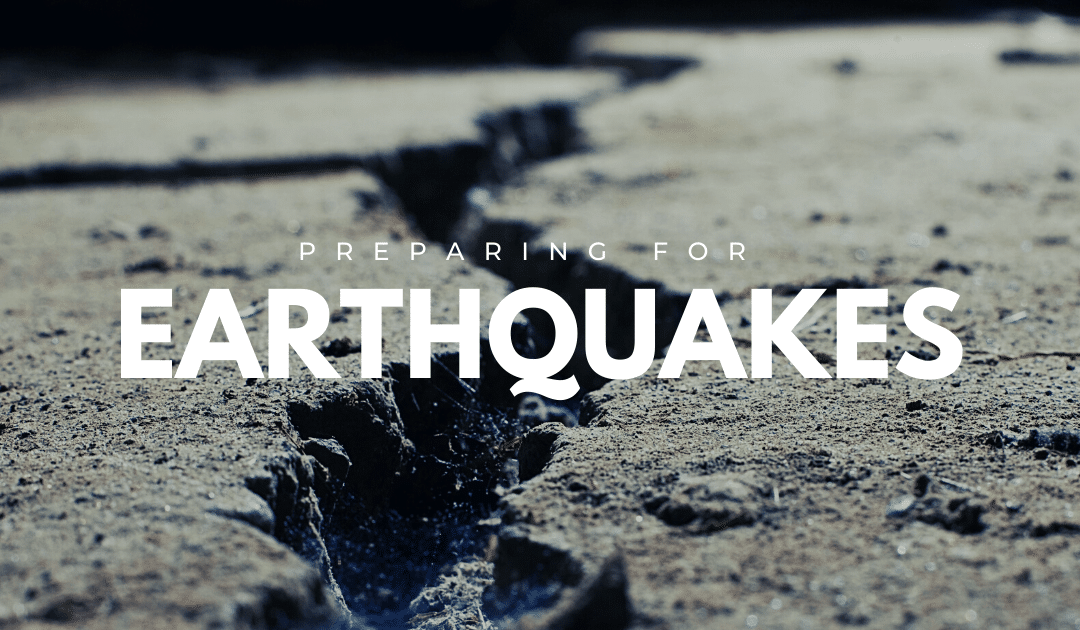
by California Casualty | Homeowners Insurance Info, Safety |
Chances are good that if an earthquake hits, you’ll be at home — especially now, when many of us are working at home due to coronavirus.
Luckily, there are simple things you can do today to safeguard your home and better protect yourself and your family before an earthquake strikes. Start with our 12 to-dos below. You’ll also find 3 top tips for what to do during a quake and, just as importantly, what not to do.
Inside Your Home
Whether it’s the kind that rolls in waves or arrives with a sudden jolt, an earthquake will surely shake your home and its contents. More people are injured by falling objects or furniture than by building damage. Make your home safer by securing and moving furniture and accessories, especially where people sit, sleep, or spend a lot of time. Pay special attention to heavy objects: move them lower to ground level and also make sure they’re not close to escape routes or doorways. Here are 12 other items to check and secure:
-
- Bookshelves – Tall bookshelves are an accident waiting to happen, as they’re unstable to begin with, and their contents can easily become airborne. Secure them to a wall stud using L-brackets and place the heaviest items on bottom shelves.
- Chemicals – If you have chemicals stored on open shelves in the garage or basement, protect them against spills by installing wood, plexiglass strips or wires to restrain them. If containers are behind cabinet doors, use latches to secure the doors.
- Display Cases – Secure these to the floor using appropriate brackets. Install safety glass if possible. Try to secure shelves inside the case as well.
- Electronics – For large electronics such as flat-screen TVs and entertainment centers, buy a “safety strap” kit, which contains straps and buckles designed for these heavy electronics.
- Hanging Objects – These are especially prone to be thrown around in a quake. Framed pictures and mirrors should be hung from closed hooks so they can’t bounce off walls. You can also use earthquake putty to secure corners. Move medium or large-sized pieces so they’re hung on studs, which is more secure being hung on drywall only. Make sure any hanging plants are well away from windows.
- HVAC Units – Anchor units using restraint brackets or seismic snubbers.
- Kitchen Cabinets – Shaking can cause cabinet doors to fly open and throw contents onto the floor. This can lead to a floor full of glass and ceramic shards – not to mention damage to countertops and walls. Secure cabinets by installing one or more of several latches: hook and eye, standard latch, pull/throwover, push latches, child-proof, or seismolatch.
- Piping – Secure all overhead pipes using brackets.
- Refrigerator – Secure refrigerators and other major appliances to wall studs using earthquake appliance straps.
- Space Heaters – These should be equipped with support legs and properly spaced angles. Learn online to DIY or hire a professional.
- Suspended AC Units – These should be braced with angles or welded to a support rod.
- Water Heater – Proper fastening involves having 2 straps that wrap completely around the unit and are screwed into studs of the wall.
What to Do During a Quake
The more you move or try to run during an earthquake, the greater chance you’ll be injured by falling or flying objects. Instead, remember to:
1. Drop to hands and knees – Do this before the earthquake knocks you down. It protects you from being thrown down and allows you to move if you need to.
2. Cover your head and neck – Get under a sturdy table or desk as soon as you can. If you can’t get to one, get next to low-lying furniture that won’t fall on you or next to an interior wall. Wherever you end up, cover your head and neck for protection.
3. Hold on to your shelter – Hold on to the table or desk (or your head and neck) until the shaking stops. If you’re under a table, be ready for it to shift as the quake rolls – and move with it.
What NOT to Do
1. Run outside – A building’s exterior walls are the most dangerous place to be during a quake. Facades, windows, and architectural details are often first to collapse or break. If you’re inside, don’t run outside, and if you’re outside, don’t run inside – crossing the building exterior puts you at risk of being injured by falling debris.
2. Stand in a doorway – It’s a long-held idea that a doorframe is the safest place to be. In modern homes, a doorframe is no safer than any other part of the house and won’t protect you from airborne or falling objects. You’re safer under a sturdy table.
3. Get in the “triangle of life” – An email that’s gone viral in the last few years offers advice counter to the long-established “Drop, Cover and Hold On” advice. The actions outlined have been discredited as potentially life-threatening by experts and their organizations.
Earthquake safety really boils down to preparation. Although you can’t control where you’ll be when one hits, you can prepare yourself and your home starting right now. Between the tips above – and our articles on what to do before and after a quake and emergency kit basics – you’ll be well on your way to pro-level preparation.
This article is furnished by California Casualty, providing auto and home insurance to educators, law enforcement officers, firefighters, and nurses. Get a quote at 1.866.704.8614 or www.calcas.com.
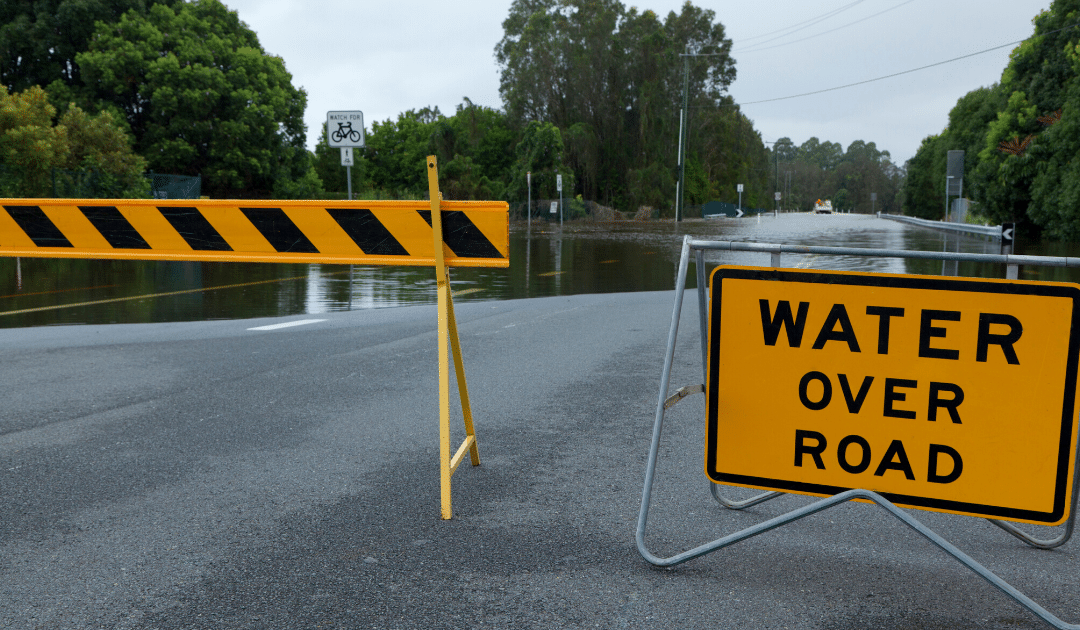
by California Casualty | Safety |
Floods are the most common of all weather-related natural disasters. They happen in every U.S. state and are more deadly than hurricanes, tornadoes, and lightning.
Among flood events, flash floods can be especially dangerous. Why? They occur suddenly, often without warning. People are caught off guard and usually underestimate the strength, speed, and volume of water. Flash floods can happen within minutes or a few hours of heavy rainfall and can quickly become raging rivers that tear through washes, dry lakes, urban zones, and other low-lying areas.
Flash Flood Alerts: 3 Levels to Know
Staying safe during a flash flood starts with being informed. In the event of heavy rainfall (sustained or sudden), follow your local alert system, NOA Weather Radio, or other emergency advisory for information. Flash flood alerts fall into 3 danger levels:
Flash Flood WATCH—This means flash flooding is possible. A WATCH usually covers several counties. Stay alert and be ready to evacuate if necessary.
Flash Flood WARNING—Issued when flash flooding is happening or is imminent. It’s usually issued for smaller, more specific areas. When a WARNING happens in your area, move to higher ground immediately—you may have only a few seconds.
Flash Flood EMERGENCY—Very rare but issued when there is catastrophic damage and a significant threat to human life.
In the event of a flash flood, whether you’re at home or in the car, here are top tips for protecting yourself.
Staying Safe in Your Car
-
- Never drive through floodwater. Roadbeds may be washed out under the surface, or there could be submerged debris. Also, it only takes 12 inches of rushing water to carry away most cars, and just 2 feet for SUVs and trucks. Remember, when approaching a flooded road: Turn Around, Don’t Drown®!
- Stay off bridges over fast-moving water. Bridges can be washed out with little or no warning.
- Don’t drive around barricades. Crossing a barrier or driving through a road closure can not only put you in extreme danger but also land you a steep fine by authorities.
- Remain in your car if you’re surrounded by fast-moving water. However, if the water starts rising inside your vehicle, exit quickly and get onto the roof.
- Use extra caution at night when it’s harder to assess flood danger.
Staying Safe at Home or On Foot
-
- Avoid flood-prone areas such as canyons, drainage channels, streams and culverts.
- Do not walk into standing water, even if it looks calm. Waters can rise suddenly, and it only takes 6 inches of rushing water to knock an adult off their feet.
- Get to higher ground fast if your home floods. Avoid going to a closed attic, as you may become trapped. Only get on your roof as a last resort.
- Keep children and pets close by.
- Avoid parking near streams or rivers during flood conditions.
Given that floods are a common and widespread occurrence, it’s smart to have your evacuation plan ready ahead of time, as well as an emergency kit and go bag. To protect yourself against damage to your home, consider buying a flood insurance policy.
This article is furnished by California Casualty, providing auto and home insurance to educators, law enforcement officers, firefighters, and nurses. Get a quote at 1.866.704.8614 or www.calcas.com.
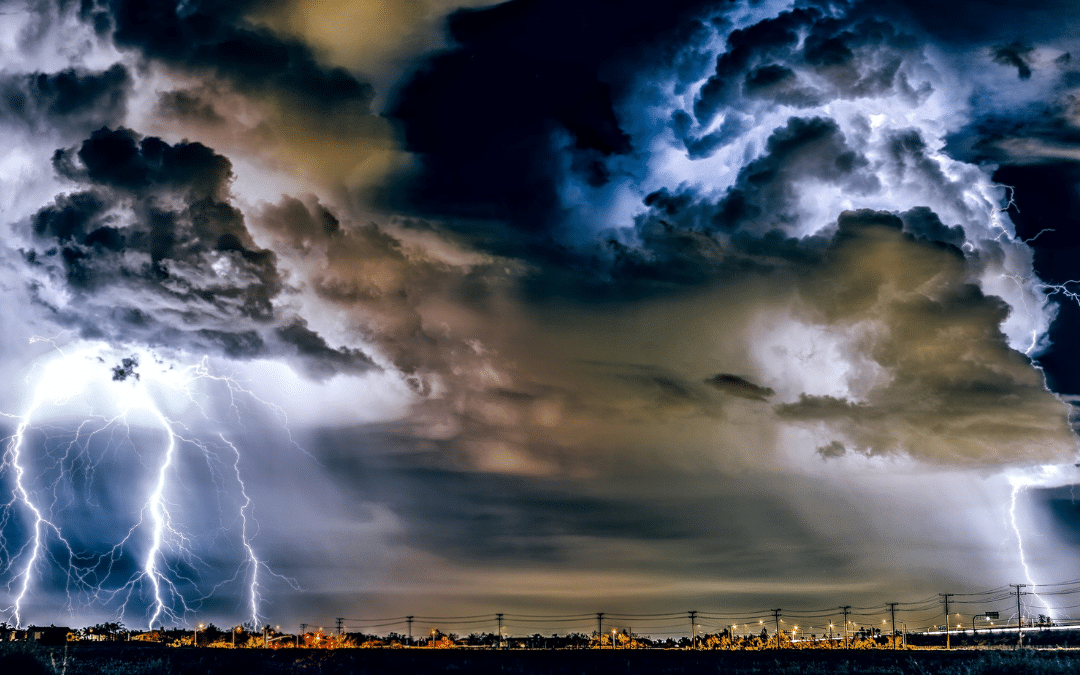
by California Casualty | Homeowners Insurance Info, Safety |
Unpredictable weather is a trademark of spring: 73° and deliciously sunny one day, 41°, and sideways rain the next.
Fluctuating weather during this time of year also plays a major factor in the development of severe spring storms. However, with the right preparation, you can be sure that your home and family are ready to withstand the worst of it.
Follow these preparation tips to be sure you are spring storm-ready.
Be Weather Aware — You can sign up for a number of free weather alert services provided by national or local agencies, weather channels, and power companies. Usually, alerts come to your phone via text message or app, but many have multiple delivery methods. And remember, radio is the old standby, especially in a power outage (so set your emergency radio to the correct station ahead of time).
Trim the Trees — Trim low-hanging limbs, as well as any branches hanging near your home or power lines that could snap off in high winds and cause damage.
Free Your Gutters — Remove leaves and other debris from gutters, drains, and downspouts (best done each spring and fall). This ensures that any deluge of rainwater is quickly diverted away from your home and foundation rather than potentially flooding it. Take the opportunity to check gutters for leaks, damage, and sagging; also make sure they’re securely attached.
Check the Sump Pump — If you haven’t had to deal with a flooded basement, thanks are due to your hardworking sump pump. To keep it in good working order, test it a few times a year, including before spring storms. Clear any debris and make sure it’s working and draining properly. Consider adding a battery-powered back-up pump, or a standby generator, in case of power outages.
Get Ahead of Leaks — Leaks are sneaky … and can cause damage quickly. If you’ve had any leaks in the past, now’s the time to seal them up—before the big rains start. Also do a preventive check on your doors’ and windows’ sealing (inside and outside), as well as in the garage and basement, then fix any gaps or cracks.
Secure Items — By the time the wind is bending trees, it’s too late to worry about securing items in your yard. As soon as storms are forecast, bring items like patio furniture into the garage (or secure them in place outside). Anything that can become a projectile should be moved inside. Also close and secure shutters around your home. Drawing interior blinds and shades provide yet another layer of protection against flying debris and broken glass.
Get Your Plans in Place — When the storms roll in, you’ll be glad you made plans ahead of time.
-
- Storm Safety Plan — Create a safety plan with your family, and make sure everyone understands it and is on board. This would cover things like shelter-in-place locations in the home, evacuation routes, communication protocols if you’re separated, and a plan for your pets.
- Emergency Kit — Regularly check your kit and add, replace or discard items as needed. See our checklist here for a full emergency kit inventory. At the very least, prepare the following for storms: first aid supplies, flashlights with new batteries, two gallons of water per person, a hand-crank or battery-powered radio, a three-day supply of non-perishable food for your family and pets, and a two-month supply of any necessary medications.
- Be Ready for a Power Outage — Are you ready for a few days of no power? Charge all phones and electronic devices ahead of time. Make sure your generator is operational and ready to go. Fill your car’s gas tank (and some cans for your generator). For more tips, check out our power outage safety hacks. Finally, remember to use surge protectors when the power is being restored.
As the saying goes, “An ounce of prevention is worth a pound of cure.” When it comes to safeguarding your home, the steps above can go a long way toward preventing costly damage, headache, and hassle. And there’s no time like the present to start!
This article is furnished by California Casualty, providing auto and home insurance to educators, law enforcement officers, firefighters, and nurses. Get a quote at 1.866.704.8614 or www.calcas.com.





